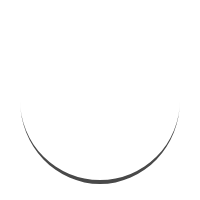Abstract
Background
Almost 5% of the world's population develops an autoimmune disease (AID), it is considered the fourth leading cause of disability for women, who represent 78% of cases. The sex ratio when it comes to the most prevalent AID varies from 9:1 in systemic lupus erythematosus (SLE) to 13:1 in endemic Tunisian pemphigus foliaceus (PF).Methods
To test the potential involvement of skewed x-inactivation in the pathogenesis of Tunisian PF, we analyzed the methylation status of a highly polymorphic CAG repeat in the androgen receptor gene and evaluated the x chromosome inactivation (XCI) patterns in peripheral blood-leukocyte-derived DNA samples of female patients with PF (n = 98) compared to healthy control (HC) subjects (n = 150), as well as female patients with SLE (n = 98) were enrolled as a reference group.Results
XCI status was informative for 50 of the 98 PF patients (51%) and 70 of the 150 HC women (47%). Extremely skewed XCI patterns were more frequent in PF and SLEwomen than HC, but the difference was statistically significant only in women with SLE. No statistical difference was observed in XCI patterns between PF and SLE patients. PF phenotype-XCI correlation analysis revealed that (i) skewed XCI patterns may be involved in the disease's subtype and (ii) it was more pronounced in the endemic group than the sporadic one. Furthermore, preferential XCI showed an increase in heterozygote genotypes of PF's susceptibility polymorphisms in immunity-related X genes (FOXP3, AR, and TLR7) in PF patients compared to HC.Conclusion
Our results suggest that skewed XCI could lead to hemizygosity of X-linked alleles that might unmask X-linked deleterious alleles.Free full text

Full text links
Read article at publisher's site: https://doi.org/10.1002/mgg3.2080
Read article for free, from open access legal sources, via Unpaywall:
https://onlinelibrary.wiley.com/doi/pdfdirect/10.1002/mgg3.2080
Citations & impact
Impact metrics
Article citations
A Novel Mutation in the MAP7D3 Gene in Two Siblings with Severe Intellectual Disability and Autistic Traits: Concurrent Assessment of BDNF Functional Polymorphism, X-Inactivation and Oxidative Stress to Explain Disease Severity.
J Mol Neurosci, 73(9-10):853-864, 10 Oct 2023
Cited by: 0 articles | PMID: 37817054
Evaluation of X chromosome inactivation in endemic Tunisian pemphigus foliaceus.
Mol Genet Genomic Med, 10(12):e2080, 09 Nov 2022
Cited by: 2 articles | PMID: 36349750 | PMCID: PMC9747557
Data
Data behind the article
This data has been text mined from the article, or deposited into data resources.
Diseases
- (1 citation) OMIM - 313700
SNPs (5)
- (2 citations) dbSNP - rs2294021
- (2 citations) dbSNP - rs3761548
- (2 citations) dbSNP - rs3761547
- (2 citations) dbSNP - rs3761549
- (1 citation) dbSNP - rs3853839
Similar Articles
To arrive at the top five similar articles we use a word-weighted algorithm to compare words from the Title and Abstract of each citation.
Role of FOXP3 gene polymorphism in the susceptibility to Tunisian endemic Pemphigus Foliaceus.
Immunol Lett, 184:105-111, 16 Feb 2017
Cited by: 11 articles | PMID: 28216259
Haematopoietic stem cell-derived immune cells have reduced X chromosome inactivation skewing in systemic lupus erythematosus.
Ann Rheum Dis, 83(10):1315-1321, 30 Sep 2024
Cited by: 0 articles | PMID: 38937070 | PMCID: PMC11503196
Analysis of skewed X-chromosome inactivation in females with rheumatoid arthritis and autoimmune thyroid diseases.
Arthritis Res Ther, 11(4):R106, 09 Jul 2009
Cited by: 60 articles | PMID: 19589151 | PMCID: PMC2745787
Update on immunogenetics of Tunisian endemic pemphigus foliaceus.
J Leukoc Biol, 105(2):257-265, 21 Dec 2018
Cited by: 4 articles | PMID: 30577075
Review




